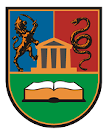Please use this identifier to cite or link to this item:
https://scidar.kg.ac.rs/handle/123456789/22248Full metadata record
| DC Field | Value | Language |
|---|---|---|
| dc.contributor.author | Spasić, Jelena Lj. | - |
| dc.contributor.author | Milikic, Milan P. | - |
| dc.contributor.author | Lukić, Jelena | - |
| dc.date.accessioned | 2025-04-08T21:58:21Z | - |
| dc.date.available | 2025-04-08T21:58:21Z | - |
| dc.date.issued | 2025 | - |
| dc.identifier.isbn | 9788676042425 | en_US |
| dc.identifier.uri | https://scidar.kg.ac.rs/handle/123456789/22248 | - |
| dc.description.abstract | Scientific literacy is one of the shared aspirations of numerous educational systems. The importance of learning is reflected in the student’s acquaintance with the key concepts and laws on which the world in which we live is based, and then in the development of a scientific way of thinking necessary for satisfying personal and social needs (Antić, Pešikan, & Ivić, 2015; Rutheford & Ahlgren, 1990, according to Marušić Jablanović & Blagdanić, 2019). For a student to be considered scientifically literate, he or she must exhibit measurable behaviors that are recognized on international knowledge tests (such as TIMSS or PISA). When it comes to the lower primary schools in Serbia, two school subjects primarily deal with the development of scientific literacy: Mathematics and Nature and Society. The goals of the STEMS concept are to enhance reading comprehension skills via different types of texts used in Mathematics and Nature and Society, to encourage students to connect the grammatical concepts covered in The Serbian Language course with the content proscribed for Mathematics and Nature and Society, to promote the proper use of orthographic and grammatical rules in open-ended questions used in Mathematics and Nature and Society, and to improve the understanding of vocabulary used in textual tasks to teach the content of Mathematics and Nature and Society. This paper demonstrates that the lexico-semantic abilities and knowledge in Mathematics and Nature and Society can be improved through integrated activities. We present the possibilities for integrating the content of The Serbian Language course with the scientific content taught in Mathematics and Nature and Society. | en_US |
| dc.language.iso | en | en_US |
| dc.publisher | Faculty of Education, Jagodina, University of Kragujevac | en_US |
| dc.relation | MSTDI - 451-03-65/2024-03/ 200140 | en_US |
| dc.relation.ispartof | STEM/STEAM/STREAM approach in theory and practice of contemporary education | en_US |
| dc.rights | CC0 1.0 Universal | * |
| dc.rights.uri | http://creativecommons.org/publicdomain/zero/1.0/ | * |
| dc.subject | integration | en_US |
| dc.subject | Serbian language methodology | en_US |
| dc.subject | mathematics methodology | en_US |
| dc.subject | nature and society methodology | en_US |
| dc.subject | STEM approach | en_US |
| dc.title | THE ROLE OF THE STEMS CONCEPT ON THE DEVELOPMENT OF LANGUAGE ABILITIES AND THE FUNCTIONALITY OF KNOWLEDGE FROM MATHEMATICS AND NATURE AND SOCIETY | en_US |
| dc.type | conferenceObject | en_US |
| dc.description.version | Published | en_US |
| dc.identifier.doi | 10.46793/STREAM25.371S | en_US |
| dc.type.version | PublishedVersion | en_US |
| dc.source.conference | STEM/STEAM/STREAM Approach in theory and practice of contemporary education (31. 05. 2024 Faculty of Education, University of Kragujevac) | en_US |
| Appears in Collections: | Faculty of Education, Jagodina | |
Files in This Item:
| File | Description | Size | Format | |
|---|---|---|---|---|
| 29 Jelena Lj. Spasić, Milan P. Milikić, Jelena S.pdf | 292.34 kB | Adobe PDF |  View/Open |
This item is licensed under a Creative Commons License


